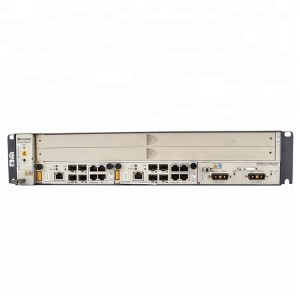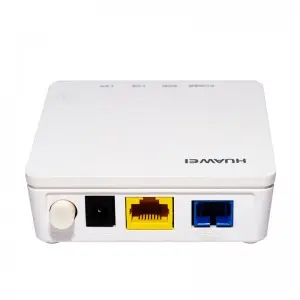In recent years, fiber to the home (FTTH) has begun to be valued by telecommunication companies around the world, and enabling technologies are developing rapidly. There are two important system types for FTTH broadband connections. These are Active Optical Network (AON) and Passive Optical Network (PON). So far, most FTTH deployments in planning and deployment have used PON to save fiber costs. PON has recently attracted attention due to its low cost and high performance. In this article, we will introduce the ABC of PON, which mainly involves the basic components and related technologies of OLT, ONT, ONU and ODN.
First, it is necessary to briefly introduce PON. In contrast to AON, multiple clients are connected to a single transceiver through a branch tree of optical fiber and passive splitter/combiner units, which operate entirely in the optical domain, and there is no power supply in the PON. There are currently two main PON standards: Gigabit Passive Optical Network (GPON) and Ethernet Passive Optical Network (EPON). However, no matter which type of PON, they all have the same basic topology. Its system usually consists of an optical line terminal (OLT) in a service provider’s central office and many optical network units (ONU) or optical network terminals (ONT) near the end user as optical splitters.
Optical Line Terminal (OLT)
OLT integrates L2/L3 switching equipment in the G/EPON system. Generally, OLT equipment includes rack, CSM (control and switching module), ELM (EPON link module, PON card), redundant protection -48V DC power supply module or a 110/220V AC power supply module and fan. In these parts, the PON card and power supply support hot swapping, while other modules are built in. The main function of the OLT is to control the two-way transmission of information on the ODN located in the central office. The maximum distance supported by ODN transmission is 20 km. OLT has two floating directions: upstream (obtaining different types of data and voice traffic from users) and downstream (obtaining data, voice and video traffic from metro or long-distance networks, and sending it to all ONTs on the network Module) ODN.
Optical Network Unit (ONU)
ONU converts optical signals transmitted through optical fibers into electrical signals. These electrical signals are then sent to each user. Usually, there is a distance or other access network between the ONU and the end user’s house. In addition, ONU can send, aggregate and organize different types of data from customers, and send it upstream to the OLT. Organizing is the process of optimizing and reorganizing the data stream, so it can be delivered more efficiently. The OLT supports bandwidth allocation, which allows data to be smoothly transferred to the OLT, which is usually a sudden event from the customer. ONU can be connected by various methods and cable types, such as twisted pair copper wire, coaxial cable, optical fiber or Wi-Fi.
Optical Network Terminal (ONT)
In fact, the ONT is essentially the same as the ONU. ONT is an ITU-T term, and ONU is an IEEE term. They all refer to the user-side equipment in the GEPON system. But in fact, according to the location of ONT and ONU, there are some differences between them. The ONT is usually located at the customer premises.
Optical Distribution Network (ODN)
ODN is an integral part of the PON system, which provides an optical transmission medium for the physical connection between ONU and OLT. The reach range is 20 kilometers or more. In ODN, optical cables, optical connectors, passive optical splitters and auxiliary components cooperate with each other. ODN specifically has five parts, which are feeder fiber, optical distribution point, distribution fiber, optical access point and incoming fiber. The feeder fiber starts from the optical distribution frame (ODF) in the central office (CO) telecommunications room and ends at the light distribution point for long-distance coverage. The distribution fiber from the optical distribution point to the optical access point distributes the optical fiber to the area next to it. The introduction of optical fiber connects the optical access point to the terminal (ONT) so that the optical fiber enters the user’s home. In addition, ODN is an indispensable path for PON data transmission, and its quality directly affects the performance, reliability and scalability of the PON system.
Post time: Dec-31-2021



